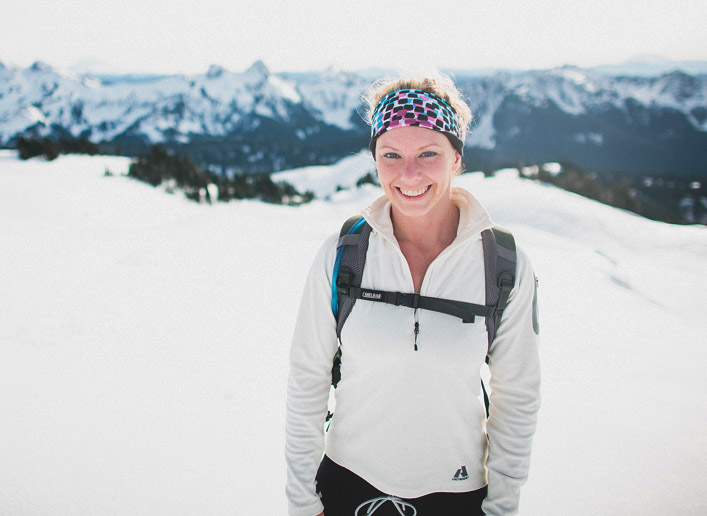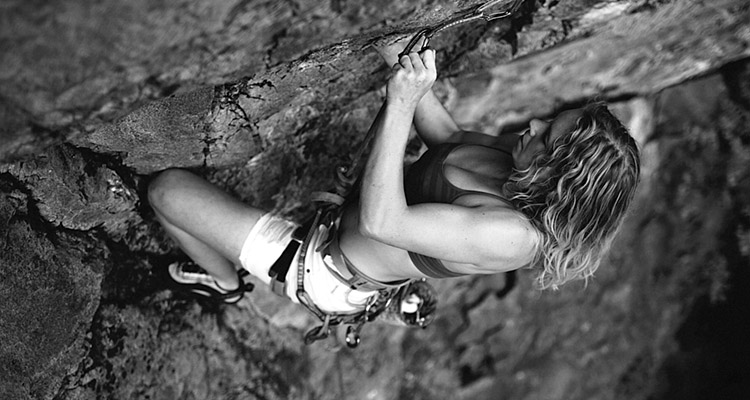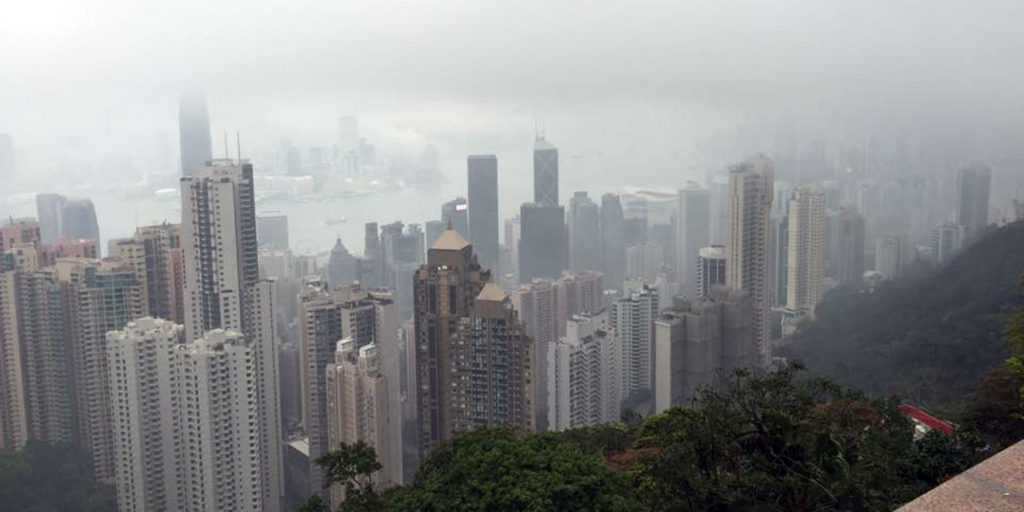Some students won’t settle for anything less than an A. Take Erin Machinchick, a current student in the Health Care MBA program. Enrolled in the Management of Organizational Behavior course taught by Professor Chad Brinsfield, Machinchick learned that the case study featured in the course was an examination of the 1996 tragedy on Mount Everest in South Asia. So what did she do? She decided to climb Mt. Everest.
When Machinchick began climbing, it was simply another part of an active, outdoor lifestyle. Growing up in Grand Rapids, Michigan, with her parents and younger brother, Machinchick was, in her own words, part of “a typical Midwestern, middle-class family; open to new experiences but rarely challenging her comfort zone. I played soccer and took tennis lessons, enjoyed camping and science class, and dreamed of being a doctor someday.”
But when she took a job as a research coordinator at the University of Washington Surgical Outcomes Research Center (SORCE) in Seattle, she discovered a love for rock climbing.
“I can’t really explain what drew me to climbing at the onset, beyond simply that it was fun. As I improved, there emerged a fascinating level of complexity to the sport. Much like a game of chess, with climbing you can plan your hand and foot positions several moves in advance, enabling you to set yourself in the optimal body position for the most difficult section of the climb (in climbing lingo: the crux). Planning, analysis and problem solving lend to far more success than brute strength alone.”
It is the physical challenge, of course, that keeps most of us from scaling rock faces on a regular basis. And it is overcoming this challenge in the face of a genetic disorder that was part of the attraction for Machinchick.
When she was 8 years old, Machinchick’s father went into kidney failure as a result of Polycystic Kidney Disease (PKD), a genetic disorder with a 50 percent chance of being passed along to the next generation. “After six months of dialysis treatments four times each week, my parents underwent West Michigan’s first-ever spousal kidney transplant,” she said. “This was an impactful experience. I was able to observe my father living with his disease but not allowing it to control or change him, and ultimately overcoming it to live a very normal life post-transplant. Dialysis meant a very strict diet and limited activity, but we worked those requirements into our lives as if it were completely normal. Health was something to be aware of and respected, but not unnecessarily limiting.”
Both Machinchick and her brother carry the gene, and she was diagnosed with PKD at 18. Currently she is at stage 3 and maintains 40 to 50 percent of her kidney function.
The Mental Game
When asked about the rigors of climbing, Machinchick returns repeatedly to the psychological impact she gradually has discovered. “Rock climbing illuminates mental boundaries and provides an opportunity to challenge them,” she said. “Climbing exercises our ability to accept and push past fears and doubt, to try to grasp a hold that you don’t think you can reach.”

(Photo by Michael Rowley)
Honing her mental game on the wall – developing skills in planning, problem-solving and risk-taking – has had an effect on her career. As a product operations manager in UCare’s Strategy and Product Management Department, she is involved in the development and implementation of a new insurance product scheduled to launch in 2016. A key responsibility is to decipher the complex configuration and operational processes that support the company’s insurance plans, translate those processes to the executive team, then convert executive directives into action. Translating the “monstrous sea of detail,” as she describes it, requires the ability to think creatively and strategically, to look for new routes or pathways that will help her reach her goals.
Coursework in the MBA program also has had an impact, providing an opportunity to explore new ideas and approaches. “It has fostered knowledge in many areas of the health care system that I was previously unfamiliar with, and matured my own opinions with accurate information and informed debate,” she said. “The program has examined issues, successes and new ideas both in the trenches and outside of the box.”
Living at 17,000 Feet
Machinchick’s decision to climb to Mount Everest base camp was a complex one, influenced by a desire to experience a different culture, explore the natural beauty of a different part of the world and understand the process mountaineers experience when making such a difficult trek. The confluence of the case study assigned as part of her course was serendipitous, but for Machinchick, provided the ideal opportunity to explore leadership and decision-making, team dynamics and individual motivators. “So much of mountaineering is suffering on the way to the summit. I wanted to understand that process. I certainly understand some of the mindset – constantly evaluating your situation.”
It took the team 11 days to reach base camp, alternating hiking days with resting days to become acclimated to the altitude. Along the way, they stayed in tea houses run by the Nepalese, played cribbage and Scrabble, visited local sites and, fortunately for Machinchick, checked in at the Himalayan Rescue Association clinic. “Altitude was the big new adventure for me. I had the chance to consult with the staff at the clinic, who helped me adjust my daily regimen to better deal with the altitude.”
Once at base camp, Machinchick was unprepared for her surroundings. “It’s almost as though you’re walking on the moon. You’re on the glacier, with rock and dirt and snow everywhere. It’s very hilly, almost unstable.” Base camp also gave her the chance to talk with expedition guides, most of whom had been present in 1996.
What she discovered is that there is no one thing that led to eight climbers losing their lives during a blizzard on the mountain in 1996 (15 people died during that climbing season, making it the deadliest until the 2014 avalanche), rather a confluence of factors made dangerous by an unprecedented number of media on the mountain that year. “The guides I talked to believe the presence of the media influenced climber behavior. The pressure of being watched globally led some people to make bad decisions, decisions they may not have made had they been out of the camera’s lens.”
Living in the Real World
In an essay submitted as part of her application to the Health Care MBA program, Michinchik described her love of bridging gaps in the workplace, of helping different and diverse audiences who would otherwise struggle to understand one another, feel more connected.
Back in the United States, Machinchick is beginning to connect lessons learned in her MBA program and on Everest with her work. “It is very desolate in base camp. There is a feeling of isolation, as though you are no longer part of the real world,” she said.
The health care industry, in her view, too often operates in the same way – as though it is removed from changes affecting the real world. Those in health care, she said “tend to dig into the trenches and form opinions on the issues and solutions for our industry from deep in the weeds. Cost and quality are clearly some of the most prominent challenges, and there have been many terrific ideas enacted to control them, but almost all of these initiatives are designed to fit within the current industry structure. I would challenge that many of our industry's biggest opportunities relate to the structure of the industry itself, rather than the details within it. … I tend to think that, at a certain point, it is better to change the shape of the box we are living in, rather than alter each item within it.”
Read more from B. magazine.







